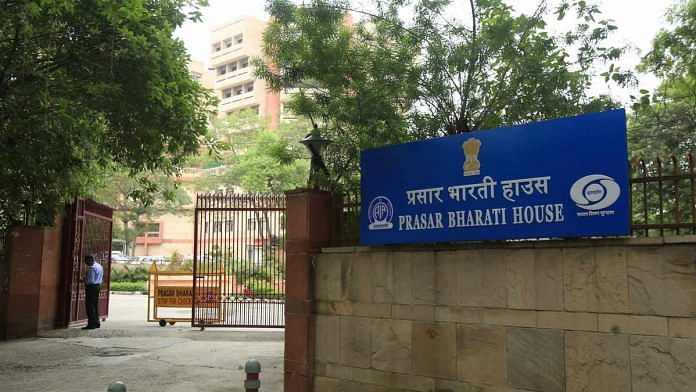The Ministry of Information and Broadcasting recently amended the Policy Guidelines for Uplinking/Downlinking of Satellite Television Channels in India. Among other things, the new guidelines require private satellite television channels to dedicate 30 minutes of programming for socially relevant content. The legal provision is perplexing in a landscape where four crore households view TV content on Doordarshan Free Dish, Prasar Bharati’s distribution network, and all TV subscribers receive almost 36 Doordarshan channels.
Before the entry of private television in India, DD was the only TV content available to citizens, 1965 onwards. ‘Krishi Darshan’, India’s longest running TV programme, was first aired in 1967, and the agricultural information show has broadcast more than 16,000 episodes. Agriculture and rural development is a theme listed in Section 12 of the Prasar Bharati Act, 1990, which outlines the core objectives of public broadcasting. It begs the question: why did the central government impose a fresh public interest obligation on private broadcasters when it could have doubled down on public broadcasting instead?
Lack of financial autonomy
Public service broadcasters are expected to uphold high standards of editorial ethics and quality, produce socially relevant content, and compete with commercial broadcasters. All DD Free Dish channels collectively clocked a watch-time of more than 94 million hours and reached 680 million viewers nationwide in 2021. DD News remains the most trusted news source in India, according to a survey conducted by the Centre for the Study of Developing Societies (CSDS) in 2022. Clearly, household reach and public trust are not the problem. The public broadcaster’s lack of financial autonomy and its inability to produce relevant content is, however, a long-standing concern.
Prasar Bharati relies on the government for funding and does not have the resources to create quality content. In FY18-19, 61 percent of the broadcaster’s revenue came from government grants and subsidies. In the same year, Prasar Bharati spent only nine percent on programming and 79 percent on engineering and administrative costs. In 2014, the Expert Group Report on Prasar Bharati—government relationship observed that 44.4 percent of DD employees work on engineering aspects and 36.9 percent on administrative support. Only 18.7 percent employees worked on the core function of content production.
Other public broadcasters have financial autonomy and have produced award-winning content. The British Broadcasting Corporation (BBC) generated 3.79 billion pounds (76 percent of their revenue) through licence fees in 2016-17. The BBC collects a licence fee from anyone who watches live TV programmes on TV channels in the UK. It allows the broadcaster to invest in TV, radio, and online content. The BBC co-produces award-winning films like The Power of the Dog (2021), which won the Golden Globe for Best Motion Picture — Drama in 2021.
The ‘Hallyu’, or the wave of global fanfare for Korean culture, started with a TV drama series called Winter Sonata (2003), produced by the Korean Broadcasting System (KBS), South Korea’s public broadcaster. KBS generated 49 percent of its revenue through subscription fees and 18.7 percent from commercial advertisement sales in 2019. In 2012, Nippon Hoso Kyokai (NHK), Japan’s public broadcaster, which also charges an annual receiving fee, picked up the International Emmy in the News category for a series of reports on the Great East Japan Earthquake.
Also read: India doesn’t need a media market regulator. Industry actually needs more economic freedom
Mechanisms to generate revenue
India cannot charge a high subscription fee from subscribers because of its socio-economic profile, but the central government can generate a corpus by charging minimal fees from its 18.4 crore (as of March 2021) TV subscriber households. A licence fee of Rs 5 per month translates to Rs 92 crore per month and Rs 1,104 crore annually as revenue for Prasar Bharati. This is enough for the public broadcaster to produce or commission content on social issues and entertainment shows.
Pay TV subscribers in India already pay TV distributors Rs 130 per month for a basic channel connection, Rs 80 as connection cost, and Rs 50 as miscellaneous costs to improve the quality of service. The government does not have an accountability mechanism to ensure that distributors spend this on improvements in quality of service, as also highlighted in a recent report. The government should instead allocate a part of the mandatory subscription fees to Prasar Bharati for content production.
During the Covid-19 pandemic, DD played an important role in social messaging and dissemination of news. Broadcasting centres remained operational with 24-hour news services as well as educational and entertainment programming. Moreover, DD channels reach every TV household in India unlike private broadcaster channels. The public broadcaster is clearly well-suited to disseminate high-impact content on socially relevant themes, if it has the financial resources and autonomy to do so. It is important to devise a self-sustaining revenue model and global practices show that a subscription fee is the best way forward. The government should consider this approach as an alternative to placing public service broadcasting requirements on private broadcasters.
Varun Ramdas is a Senior Associate at Koan Advisory. He tweets @ramdas_varun. Views are personal.
This article is part of ThePrint-Koan Advisory series that analyses emerging policies, laws and regulations in India’s technology sector. Read all the articles here.
(Edited by Prashant)



